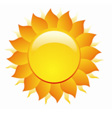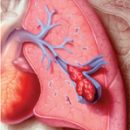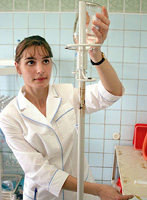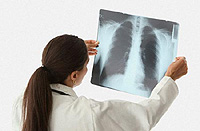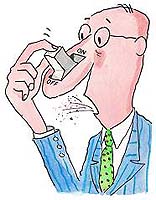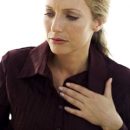What is obstructive sleep apnea and what it is different from the central apnea? How the symptoms of sleep apnee are manifested and how to deal with this somnunical disorder?
Content
One of the serious somnological disorders on the modern classification is CSA – Sleepy apnea syndrome, which is the emergence of respiratory pauses of various origin during sleep. Since the dream is one of the most important processes of life, discomfort caused by oxygen starvation, is extremely adversely affected by.
Symptoms of sleep apnea
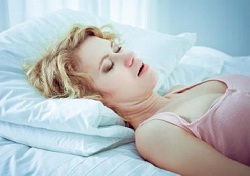 Frequent unconscious and conscious awakening, changes in the cardiovascular system, the absence of full sleep cycles and wakefulness leads to the development of the set, seemingly not interconnected symptoms. They are characteristic of both the central and obstructive sleep apnea.
Frequent unconscious and conscious awakening, changes in the cardiovascular system, the absence of full sleep cycles and wakefulness leads to the development of the set, seemingly not interconnected symptoms. They are characteristic of both the central and obstructive sleep apnea.
- Night symptoms
Night awakening from suffocation and a feeling of shortness of shortness of shortness of shortness of shortness of breath, but such a popular symptom as snore is characterized only for obstructive sleep apnea, Niccountured, sweating, frequent awakening may also develop. - Day symptoms
The results of restless sleep and oxygen deficiency day show themselves increased fatigue and fatigue. In addition, symptoms of damage to other systems can increase – Cardiovascular, nervous, endocrine and other.
Central and obstructive apnea
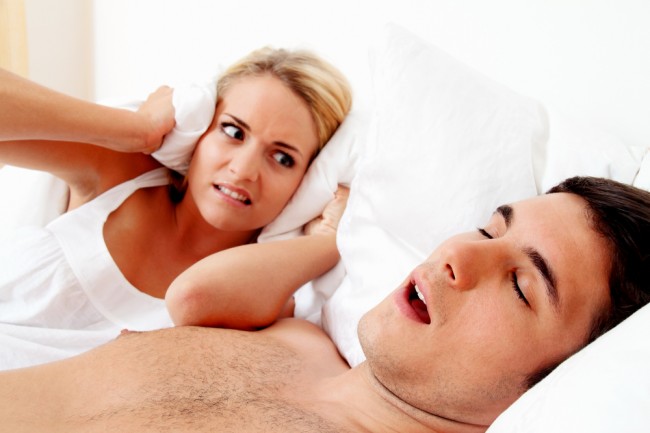 Obstructive sleep apnea – A fairly common phenomenon is about 90% of all cases of appeal to the doctor about apnea. This option of apnea is due to peripheral obstacles in the breath, which are often thin in the nasophal. 10% of all cases of apnea syndrome at night occurs in the central type, and this is the least studied event development option. Poorly understood the mechanisms for the development of the central apnea, the oppression of the respiratory center and the disappearance of its automatism, the treatment regimen of the central apnea is also undoubted and not effective enough.Undines Curse Syndrome was described in 1962 in a patient with a disease of the conductive paths of the central nervous system. Romantic name is associated with mythological character – Virgin Undina, who was deceived by the beloved and cursed his breath. Alveolar hypoventilation – A phenomenon that can be caused by factors for damage to different levels of the respiratory chain, of which the first two are central:
Obstructive sleep apnea – A fairly common phenomenon is about 90% of all cases of appeal to the doctor about apnea. This option of apnea is due to peripheral obstacles in the breath, which are often thin in the nasophal. 10% of all cases of apnea syndrome at night occurs in the central type, and this is the least studied event development option. Poorly understood the mechanisms for the development of the central apnea, the oppression of the respiratory center and the disappearance of its automatism, the treatment regimen of the central apnea is also undoubted and not effective enough.Undines Curse Syndrome was described in 1962 in a patient with a disease of the conductive paths of the central nervous system. Romantic name is associated with mythological character – Virgin Undina, who was deceived by the beloved and cursed his breath. Alveolar hypoventilation – A phenomenon that can be caused by factors for damage to different levels of the respiratory chain, of which the first two are central:
- Hemoreceptors of central and peripherals, which become insensitive to carbon dioxide, in the norm of the respiratory impetus.
- Respiratory neurons of stem structures of the brain, damaging by injury or illness.
- Spinal cord and conductive paths.
- Muscles responsible for breathing.
- Lung fabrics.
Treatment of central apnea syndrome
Unlike obstructive sleep apnea, the symptoms of the central apnea syndrome are worse than treating. The reasons that cause it, as a rule, are states chronically incurable, or due to severe injuries. It is known that the drug stimulation of the respiratory center does not bring the desired results and is not a choice method. Auxiliary ventilation through a mask with volume control and pressure – The method is more promising, well-proven itself in many patients. An important factor is the need to sleep in a mask throughout the night, which for young patients is often a catastrophe. Up to 90% of patients on prolonged auxiliary ventilation can be translated into independent respiration, with the help of an implantable diaphragm electrostimulator, which creates an additional or main respiratory pattern. Breathing stimulant implantation distorts the voice of the patient, can indirectly influence the abdominal organs and abdominal muscles, but has significant advantages. In addition to full or partial independence from the stationary respiratory machine, electrical stimulation allows patients to independently lean, thereby reducing the risk of respiratory infection and the need to use auxiliary means to purify the respiratory tract.

